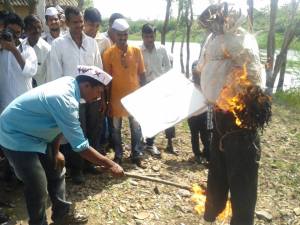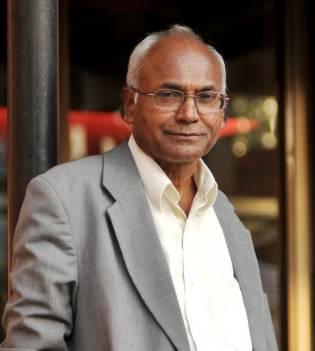Gail Omvedt
Diwali, or the “Festival of Lights,” comes in the period after the harvest, as days begin to get shorter. The first day is for honoring cows and buffalos. The second day, in Brahmanic culture, commemorates the killing of Mahisasura: this symbolizes the struggle between “devas” and “asuras.” In the legends, both are children of the same mother, but asuras are portrayed as not-human. The asuras represent stable agriculture, the devas represent foraging and herding as means of sustenance. The third day is “Bali Pratipada,” the day of king Bali. Brahmanic tradition re-enacts the killing of Bali, the nonBrahmanic tradition remembers Bali and seeks his return. All of these are myths, and they were treated by Phule as myths, Phule used myth and counter-myth. But these days much of the counter-culture treats Bali as if the story represented a real history.

Burning of Waman Effigy at the anniversary of Baliraja Memorial People’s Dam
“Ida pida javo, Balica rajya yevo” – let troubles and sorrows go and the kingdom of Bali come! This is the ancient saying of the Marathi peasantry. It remembers Bali Raja as a kingdom of prosperity and happiness,
At Dussera nonBrahmans go out and women collect leaves of the Apte tree, joined together like hearts — symbolizing our hearts’ joining. Brahmans go and come back, the men carrying a stick of grass which they poke into the stomach of an effigy of Bali made of wheat flour. All of these represent the contradictions of the ongoing oppression of the caste system.
~~~
[Courtesy: Seeking Begumpura, November 5, 2013]









